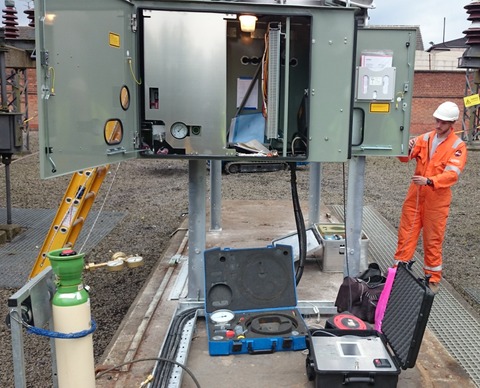
Cambridge Sensotec has unveiled the Rapidox SF6 6100 gas analyser to meet changes in regulations regarding the handling of SF6 gas.
Featuring a pump back gas return function, the analyser is able to extract the SF6 gas from equipment such as Gas Insulated Substations (GIS) and simultaneously analyse all measured gases.
It will then pump it back at the same pressure as used within the electrical equipment using a 10 bar compressor.
A vacuum purge cycle and gas storage system ensures that no air is allowed to contaminate the gas sample and that no SF6 gas is allowed to escape during the testing period.
Due for autumn release, the Rapidox uses high precision infrared (IR) sensor technology for the analysis of SF6 gas using the principle that some gases absorb IR radiation at specific wavelengths.
The IR sensor is designed to provide a rapid response, is immune to poisoning and contamination and has the ability to operate in the absence of oxygen.
Decomposition products sulphur dioxide (SO2) and moisture (H2O) may also be measured by the Rapidox SF6 6100 using electrochemical and advanced ceramic sensor technology respectively.
Additional sensors for gases such as carbon monoxide (CO), hydrogen sulphide (H2S) and hydrogen fluoride (HF) are available.
Field tests carried out by Cambridge Sensotec highlighted the need for quick and easy to use instruments for onsite SF6 gas maintenance procedures.
To meet this, the Rapidox SF6 6100 has an inbuilt microprocessor operated by a 7-inch colour touchscreen and the ability to store 12 months of continuous data.
Pre-loaded IEC and CIGRE tests are available, alongside the ability to customise test parameters.
Housed within a robust IP66 Peli case, the Rapidox is lightweight and features an 8 hour lithium ion battery as well as an in-built printer.
Sulphur hexafluoride (SF6) is a man-made gas comprising of one sulphur and six fluoride atoms.
It is extremely chemically stable, non-flammable and highly electronegative, with an excellent dielectric property of approximately 2.5 times more than air.
It is commonly used within electrical switchgear, transformers and substations as an electrical insulation, arc quenching and cooling medium.




